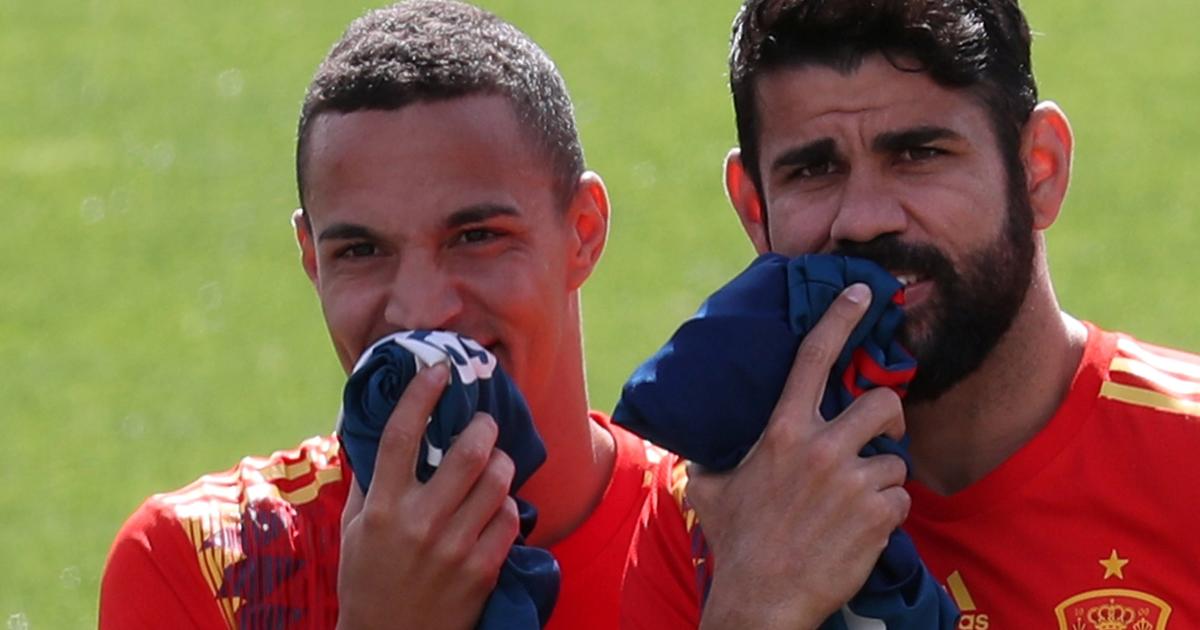REUTERS/Susana Vera
Preferred over Alvaro Morata and Gerard Moreno, Rodrigo has been drafted into the squad as a solution to what’s become Spain’s problem area of recent years.
The 27-year-old striker is something of a late bloomer having only flourished domestically during the season just gone, however he could potentially be Spain’s main striker this summer.
The second cousin of both Thiago and Rafinha Alcantara, Rodrigo came through Real Madrid’s La Fabrica academy, but was unable to progress into their first team. He did greatly impress for Julen Lopetegui’s Spanish youth sides, but found his career stutter with a move to Benfica.
Having cost Valencia €30m in the summer of 2015, Rodrigo is still the club's most expensive signing and finally appears to have found his feet for both club and country recently.
Table of Contents
Whether he plays centrally or as part of a front-three, from the start or as a high-impact super-sub, Rodrigo could well be a dark horse in the Spanish team this summer.
Past season
As a player who was widely tipped for great things and a definite star of the future, Rodrigo has found it hard to convert his potential into tangible stardust. Last season, however, has finally seen him start to deliver.
After three seasons and 75 league appearances which produced 10 goals, Rodrigo scored 16 times and made seven assists from his 37 league games (32 starts).
His strong return not only helped push Los Che into a fourth-placed finish, it also captured the eye of many an onlooker.
Rodrigo's La Liga by numbers:
- 37 appearances
- 34 take-ons
- 27 aerial duels won
- 37 chances created
- 78 total shots
- 16 goals
- 7 assists
With both Simone Zaza and Santi Mina providing competition for a starting place, Rodrigo began the campaign in a two-man attack with the former.
His first goal of the season came in their fourth game, a 1-1 draw at Levante, beginning a sequence of five consecutive league matches with a goal, which also saw him claim eight goals and three assists in ten league games before the end of November.
A similar hot streak of goals towards the end of the season -seven goals in seven games throughout March and the start of April- kept his name in the limelight and, although he failed to score during the last five fixtures of the season, he had already established his best return from his senior career and a revitalised reputation.
International experience
As a relative newcomer to the international stage, Rodrigo has already made a meaningful impact for La Furia Roja.
His first of four senior caps actually came in the Euro 2016 qualifying match against Luxembourg back in 2014. An eight-minute cameo was enough time for him to provide an assist in their 4-0 win, but not enough for him to get a second bite of the cherry under Vicente del Bosque.
REUTERS/Susana Vera
Previously, Rodrigo had twice featured in Spain’s Olympic side of 2012 and represented the country in four different youth categories since 2010.
The highlight of this was in the U21s squad. He scored 15 goals from his 16 appearances, a total only recently surpassed by Gerard Deulofeu who now has 17 goals, but from 36 appearances at this level.
With Morata injured and Diego Costa sitting on the Chelsea sidelines last October, Rodrigo was given his second cap almost three years after his Luxembourg debut, opening the scoring after 16 minutes against Albania.
A friendly against Russia provided him with a second start for Spain before he took a starring role in the 1-1 draw with Germany, scoring for the Spaniards in the sixth minute.
Having been an unused substitute in both of Spain’s other two friendlies since Albania, Rodrigo seems to be firmly placed in Julen Lopetegui’s thinking having been used specifically in his preferred centre-forward position.
Tactical profile
Beyond being the main thrust of an attack, Rodrigo is also more than capable of playing anywhere across the front line, particularly the right wing which is his natural side.
It is perhaps this flexibility in his game which has seen him included in Lopetegui’s team, an attribute the Spanish coach rates incredibly highly.
It is as a centre forward where he excels and, although Diego Costa remains the favourite to start for his country, Rodrigo offers something quite different to his fellow Brazilian-born compatriot.
Where Costa is the hired muscle, Rodrigo is the speedster. While Costa can be used as a target man, Rodrigo will exploit space on the pitch and a high defensive line.
Not only does Rodrigo offer pace though, he also is one of the hardest-working players in the Spanish side. His non-stop running against the Germans both on and off the ball made him an effective foil in front of the three attacking midfielders behind him.
Add to this his ability to finish calmly with head and both feet, and you have a player who can be used to cause havoc against certain types of opponents or as an effective plan B from the bench when Spain need to change a game’s trajectory.
Listen to the RealSport football writers discuss Spain and Group B in Kremlins in the Basement: RealSport’s daily World Cup podcast.
Explore new topics and discover content that's right for you!
News



